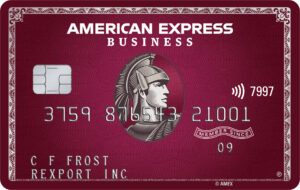The best purchasing cards for businesses, also known as p-cards, come with costs and terms that will work well with your company’s budget and buying habits. When choosing a p-card, find one that simplifies the purchasing process of your business and protects it from unauthorized charges. Your options include charge cards, debit cards, and prepaid cards with streamlined card management tools.
Here are our top nine choices for the best p-cards for business:
- U.S. Bank Commercial Rewards Card: Overall best purchasing card with rebates and low costs
- Brex Card: Best for daily or monthly payment options with all-in-one functionality and up to 8x points rewards
- Ramp Card: Best for a straightforward rewards program
- Emburse Spend Card: Best for earning 1% cash back on all purchases
- American Express® Corporate Purchasing Card: Best for businesses with substantial expenses
- The Plum Card® From American Express: Best for early payment discount or extra days to pay
- JP Morgan Purchasing Card: Best for building long-term value
- One Card from Capital One®: Best for flexible expense management and rewards redemption
- Citi Purchasing Card: Best for custom analysis and payment optimization strategy
A p-card, also known as a procurement or payment card, works like a business charge card, debit card, or prepaid card. It is linked to the organization’s account, and the business owner controls where it can be used and determines its daily or weekly dollar limits.
- If it’s a charge card, expenses are drawn from a line of credit, and the full balance must be paid each month.
- If it’s a debit card, the transaction amount will be deducted directly from the company’s bank account.
- If it’s a prepaid card, the company needs to load money on the card before it can be used.
Best P-cards At a Glance
Best For | Annual Fee | Best Feature | ||
|---|---|---|---|---|
 U.S. Bank Commercial Rewards Card | (Overall best) p-card with rebates and low costs | $0 | Provides rebates on purchases with low spend | |
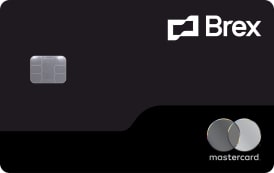 Brex Card | Daily or monthly payment options with all-in-one functionality up to 8x points rewards | $0 | Can be used for different purposes, not just for procurement | |
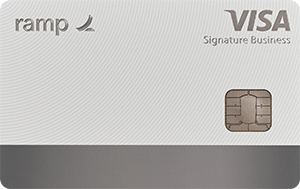 Ramp Credit Card | Straightforward rewards program | $0 | Offers up to 1.5% cash back on all eligible purchases | |
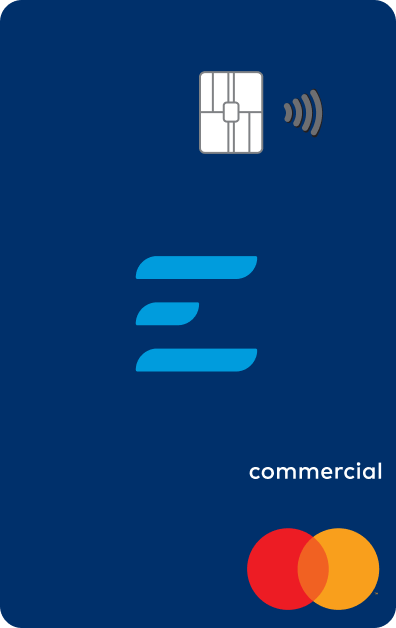 Emburse Spend Card | Earning 1% cash back on all purchases | $0 | Can be loaded up to a maximum of $100,000 | |
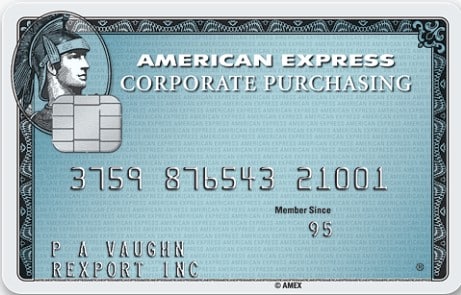 American Express® Corporate Purchasing Card | Businesses with substantial expenses | $0 | Offers four ways to use the card to help optimize spending | |
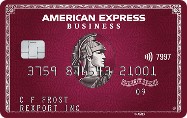 The Plum Card® From American Express | Early payment discount or extra days to pay | $250 | Offers up to 1.5% cash back on eligible charges when you pay within 10 days of your statement closing date or up to 60 days to pay without interest | |
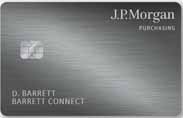 JP Morgan Purchasing Card | Building long-term value | Undisclosed | Has a dedicated team to help analyze data and assess your program’s past performance and evolving needs | |
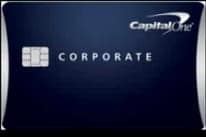 One Card from Capital One® | Flexible expense management and rewards redemption | Undisclosed | Lets you earn cash back on your everyday expenses | |
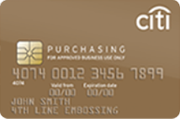 Citi Purchasing Card | Custom analysis and payment optimization strategy | None—but there may be customized costs for each business | Provides access to CitiManager Portal—allowing authorized users to manage and review account statements |
U.S. Bank Commercial Rewards Card: Overall Best Purchasing Card With Rebates & Low Costs
 U.S. Bank Commercial Rewards CardBEST FOR: Those who want rebates and low costs | |
|---|---|
Costs | Terms |
|
|
Qualifications | Features |
|
|
Why we like it: It is our best p-card thanks to its low costs, lucrative rebates, and ability to scale with your business because it’s developed for companies with $10 to $150 million or more in annual revenue. It has $0 annual or platform fees, so it is essentially free to use as long as you pay your balance in full each month to avoid penalties. What’s more, you can earn rebates on your expenses, requiring lower spending thresholds than most other traditional corporate cards. Note that rebate rates may vary depending on your expenses.
Consider the U.S. Bank Commercial Rewards Card if you:
- Are a growing company and needs a card that scales with your business’s needs
- Prefer the simplicity of earning rebates to save money for your business
Brex Card: Best for Daily or Monthly Payment Options With All-in-One Functionality & Up to 8x Points Rewards
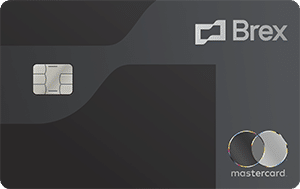 Brex CardBEST FOR: Those who want daily or monthly payments | |
|---|---|
Spending Limit | Load Limit |
|
|
Costs | |
| |
Why we like it: This excellent purchasing card for businesses can work in multiple ways—as a travel and expenses card, vendor card, benefits card, and purchasing card. It also lets you earn premium points on your purchases, which can be redeemed for cash back, statement credits, rebates, and billboards. Plus, it can work either as a charge card (paid monthly) or as a prepaid card (paid daily).
Consider the Brex Card if your company:
- Is related to tech or life sciences because the card offers premium rewards and perks relevant to these industries
- Wants to have the option to either pay monthly or daily
Ramp Card: Best for Straightforward Rewards Program
- Up to 1.5% cash back on purchases, regardless of spending categories
Pros
- Offers rewards for new and existing cardholders
- Does not charge additional fees
- Offers direct integrations to notable accounting tasks
Cons
- Requires paying balances in full each month
- Ramp is not available to sole proprietors and unincorporated businesses
- Travel and emergency assistance services: Call the Benefit Administrator at (800) 397-9010 if you are in the United States or (303) 967-1093 if you are outside of the US if you need emergency assistance.
- Purchase security: Receive a maximum of $10,000 per claim and $50,000 per cardholder in cases of theft or damage to purchases made with your card.
- Auto rental collision damage waiver: When using this card for renting a car, you can be reimbursed for damages caused by theft or collision up to the Actual Cash Value of most rented cars. Note that rental periods of 31 consecutive days are covered.
- Extended warranty protection: Extend warranties for eligible purchases made with your covered account and/or rewards programs associated with your account.
- Up to 1.5% cash back on purchases, regardless of spending categories
Pros
- Offers rewards for new and existing cardholders
- Does not charge additional fees
- Offers direct integrations to notable accounting tasks
Cons
- Requires paying balances in full each month
- Ramp is not available to sole proprietors and unincorporated businesses
- Travel and emergency assistance services: Call the Benefit Administrator at (800) 397-9010 if you are in the United States or (303) 967-1093 if you are outside of the US if you need emergency assistance.
- Purchase security: Receive a maximum of $10,000 per claim and $50,000 per cardholder in cases of theft or damage to purchases made with your card.
- Auto rental collision damage waiver: When using this card for renting a car, you can be reimbursed for damages caused by theft or collision up to the Actual Cash Value of most rented cars. Note that rental periods of 31 consecutive days are covered.
- Extended warranty protection: Extend warranties for eligible purchases made with your covered account and/or rewards programs associated with your account.
Why we like it: This corporate card can be used as a purchasing card. It comes with a straightforward rewards program, making it a good option for those who don’t want to keep track of expense categories. It also charges $0 annual, setup, or replacement fees and offers up to 20x higher credit limits than most traditional business credit cards. Additionally, it offers advanced financial management tools with its seamless platform and integrates directly with accounting software like QuickBooks, NetSuite, Xero, and Sage Intacct.
Consider the Ramp Card if you:
- Have at least $75,000 in an account that will be connected to your Ramp account—this is a requirement to open a Ramp account
- Can pay your balance in full each month
Emburse Spend Card: Best for Earning 1% Cash Back on All Purchases
 Emburse Spend CardBEST FOR: Earning unlimited cash back rewards | |
|---|---|
Spending Limit | Load Limit |
|
|
Costs | |
| |
Why we like it: This prepaid card, issued by Celtic Bank (member FDIC), lets you earn fixed-rate cash back on all eligible purchases, regardless of spending categories, and allows you to create multiple virtual and physical cards at no additional cost. You can deposit up to $100,000 to your Emburse Spend account—but if you need more, you may request an increase, subject to approval. On top of it all, it charges $0 monthly and annual fees, making it generally free to use.
Consider the Emburse Spend Card if you:
- Prefer a simple rewards program
- Have sufficient cash on hand because as a business prepaid card, you need to fund your account before you can use it for purchases
American Express® Corporate Purchasing Card: Best for Businesses With Substantial Expenses
 American Express® Corporate Purchasing CardBEST FOR: Those with substantial expenses | |
|---|---|
Costs | Terms |
|
|
Qualifications | Features |
|
|
Why we like it: The card is ideal for companies with at least 10 employees and $250,000 in credit card expenses quarterly because it qualifies for Program Optimization reports. This feature allows you to access in-depth expense details through Concur Expense. On top of that, you can use the card in various ways, such as:
- Individual Card: For traditional end-user buyers
- Supplier Card: To pay designated suppliers
- Department Card: For employees within a department
- Accounts Payable Card: To pay for approved invoices
The Plum Card® From American Express: Best for Early Payment Discount or Extra Days to Pay
The Plum Card® from American Express
BEST FOR:
Accessing early pay discounts or 60 days of no interest
- Paying early pays off: earn an unlimited 1.5% Early Pay Discount on eligible charges paid within 10 days of your statement closing date and see the discount applied to your next statement when you pay at the least the Minimum Payment Due by the Please Pay By date.
- Take up to 60 days to pay with no interest‡, when you pay your minimum due by the Payment Due Date.
- Use the power of the Plum Card to buy big for your business.
- No Foreign Transaction Fees.‡
- Terms Apply.
Pros
- No preset spending limit
- Doesn‘t charge foreign transaction fees
- Offers early pay discount
Cons
- Balance is due either monthly or every 60 days
- No 0% introductory APR on purchases and balance transfers
- Cash advance & balance transfers aren’t allowed
- Car rental loss and damage insurance: You can be covered for damage to or theft of a rented vehicle in a covered territory when using this card to pay for the entire rental. You have to decline the collision damage waiver offered by the rental company.
- Extended warranty: Terms of the original manufacturer’s warranty can be extended up to one additional year.
- Purchase protection: Protect eligible purchases for up to 90 days from the covered purchase date if they are stolen or accidentally damaged. The coverage is limited to up to $1,000 per occurrence, and up to $50,000 per card member, per calendar year.
- Global Assist® hotline: Available for 24/7 emergency assistance and coordination service―including medical and legal referrals, emergency cash wires, and missing luggage assistance.
- Paying early pays off: earn an unlimited 1.5% Early Pay Discount on eligible charges paid within 10 days of your statement closing date and see the discount applied to your next statement when you pay at the least the Minimum Payment Due by the Please Pay By date.
- Take up to 60 days to pay with no interest‡, when you pay your minimum due by the Payment Due Date.
- Use the power of the Plum Card to buy big for your business.
- No Foreign Transaction Fees.‡
- Terms Apply.
Pros
- No preset spending limit
- Doesn‘t charge foreign transaction fees
- Offers early pay discount
Cons
- Balance is due either monthly or every 60 days
- No 0% introductory APR on purchases and balance transfers
- Cash advance & balance transfers aren’t allowed
- Car rental loss and damage insurance: You can be covered for damage to or theft of a rented vehicle in a covered territory when using this card to pay for the entire rental. You have to decline the collision damage waiver offered by the rental company.
- Extended warranty: Terms of the original manufacturer’s warranty can be extended up to one additional year.
- Purchase protection: Protect eligible purchases for up to 90 days from the covered purchase date if they are stolen or accidentally damaged. The coverage is limited to up to $1,000 per occurrence, and up to $50,000 per card member, per calendar year.
- Global Assist® hotline: Available for 24/7 emergency assistance and coordination service―including medical and legal referrals, emergency cash wires, and missing luggage assistance.
Why we like it: It offers you the option to pay early and earn an unlimited cash back or carry your balance for up to 60 days with no interest. This gives you the flexibility that you need based on your cash flow. Additionally, the card has no spending limit, giving you purchasing power that varies based on your purchase, payment, and credit history.
Consider The Plum Card® From American Express if you:
- Need the flexibility to carry a balance at no additional costs
- Can pay your bills early from time to time to take advantage of the early pay discount
JP Morgan Purchasing Card: Best for Building Long-term Value
 One Card from Capital One®BEST FOR: Building long-term value | |
|---|---|
Costs | Terms |
|
|
Qualifications | Features |
|
|
Why we like it: This card can help you build long-term value for your business—companies can streamline payments and purchases and set controls for transaction limits and other parameters. With a dedicated team of experts who can help analyze data, the provider will assess your past performance and evolving needs. Its team also helps build a business case for strategic payments and assists you with implementing industry best practices.
Consider the JP Morgan Purchasing Card if you:
- Need a dedicated team of experts to help take your business to new heights through analysis of your business’s data
- Don’t mind not earning rewards and prioritize enhanced account management tools
One Card from Capital One®: Best for Flexible Expense Management and Rewards Redemption
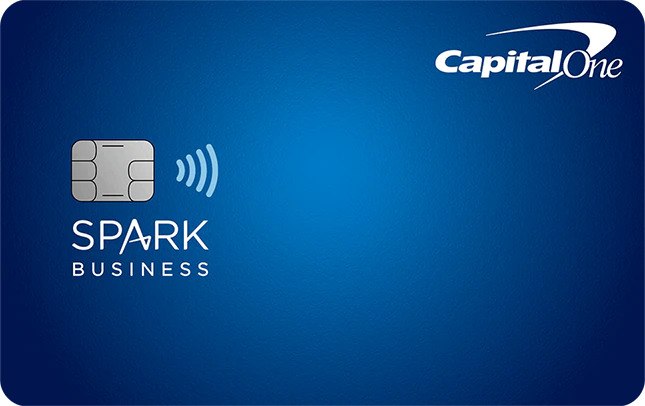 One Card from Capital One®BEST FOR: Those who want flexible expense management and rewards redemption | |
|---|---|
Costs | Terms |
|
|
Qualifications | Features |
|
|
Why we like it: It offers flexible expense management and rewards redemption. You can choose from a 14-day term or a 30-day term, depending on your cash flow availability and credit needs. While the cash back rate is undisclosed, it was noted that there is no maximum limit on the amount of cash back you can earn, and your rewards will not expire.
Rewards can be redeemed through a statement credit, gift cards, merchandise, and travel. On top of that, you can save up to 4% on more than 30,000 qualifying merchants with Mastercard Easy Savings®.
Consider the One Card from Capital One® if you:
- Want to maximize your rewards through unlimited cash back on regular purchases and Mastercard Easy Savings® rebates on selected merchants
- Can pay your balance in full within 14 days or 30 days (depending on the term you choose)
Citi® Purchasing Card: Best for Custom Analysis & Payment Optimization Strategy
 Citi® Purchasing CardBEST FOR: Those who need custom analysis and payment optimization strategy | |
|---|---|
Costs | Terms |
|
|
Qualifications | Features |
|
|
Why we like it: This card streamlines your business processes by eliminating the need for purchase orders, invoices, and other inconvenient paperwork. It offers robust spending controls and simplified purchasing and payment processes. It also lets you manage large expenses with effective tools that allow you to allocate expenses across multiple general ledgers or cost centers accurately.
Consider the Citi® Purchasing Card if you:
- Earn $10 to $150 million in annual revenue and don’t mind not earning rewards on your purchases
- Need to withdraw cash from the ATM from time to time
How We Selected the Best Purchasing Cards
When selecting the best purchasing cards, we considered various factors, such as cost, terms, qualifications, and control. We also looked at access to reporting and analytics and the convenience of their online account management system.
Frequently Asked Questions (FAQs)
- Small business credit cards: Small business credit cards allow you to float expenses while growing your business. The best credit cards help you grow your credit score and come with low introductory and ongoing interest rates and relevant rewards.
- Prepaid business cards: A prepaid business card requires you to preload funds into the card whenever the total available funds become low. It has lower qualifications than a small business credit card.
- Secured business credit cards: Secured business credit cards are a good option for those who cannot qualify for a nonsecured card because of poor credit, low credit score, or lack of credit history.
The major difference between small business credit cards and purchasing cards is how the terms are set up. A business credit card allows you to carry a balance with APR while purchasing cards are either a charge card (meaning your balance is due in full every month) or a prepaid or debit card, which means you need to preload funds into your card before you can use it. Both can be used to pay for business expenses, but purchasing cards are designed specifically to streamline the purchasing process for business-to-business (B2B) transactions.
You can use purchasing cards when creating a purchase order, check request, or petty cash that needs to be processed with any vendor that accepts credit cards. You can benefit from using purchasing cards due to their convenience and lower transaction costs and by using them as an alternative to petty cash.
When deciding which purchasing card is best for your business, consider the following:
- Payment terms: Do you want to pay your balance after each month, or do you want your purchase transactions to be directly deducted from your account balance? This can help you decide which card to use—either a corporate charge card or a prepaid purchasing card.
- Rewards: If your company prefers to earn rewards on purchases, select a card that offers rewards in the form of cash back, points, or rebates.
- Software: All purchasing cards come with business tools and reporting software that makes it easier for your company to track and reconcile transactions. Choose one with software that integrates with your accounting system and allows you to set the controls that you want.
Bottom Line
The best purchasing cards for business allow you to control spending and streamline the purchasing process. This results in a more efficient payment method and better accountability. When choosing a p-card, consider the costs, terms, features, and qualification requirements.
